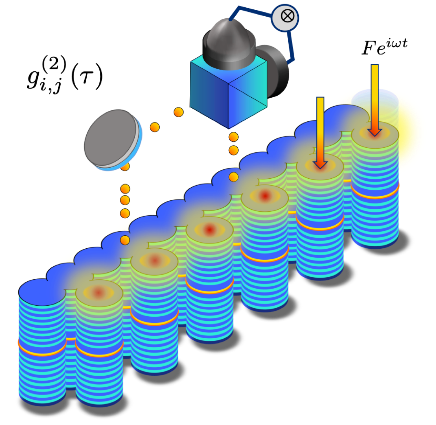
The ARQADIA project finds its inspiration in the physics of condensed matter and particularly in so-called "quantum" materials. Quantum materials have very special properties (superconductivity, quantum magnetism, fractional quantum Hall effect) that cannot be described simply by models involving only one particle (atom or electron) at a time, but which require considering the interactions between a large number of particles. The aim of the ARQADIA project is to build, using light, synthetic quantum materials where such collective behaviors occur. The goal is twofold: probing these artificial materials to help understanding complex phenomena by probing them in well-controlled systems, and using their collective response as a potential resource applicable to quantum technologies.
Synthetic quantum materials developed during ARQADIA will be manufactured in the C2N technological platform (clean room) and will take the form of arrays of "light traps" (see Figure). The coupling between light and electronic excitations in these structures leads to the formation of hybrid light-matter particles (called "polaritons") that behave like interacting photons. The technological challenge to be addressed during ARQADIA will consist in generating polariton-polariton interactions that are strong enough to produce quantum correlations between photons escaping from these samples. Optical signatures of this quantum behavior will then be studied depending on the dimensionality of the system (1D or 2D) or on the topology of the energy bands.
